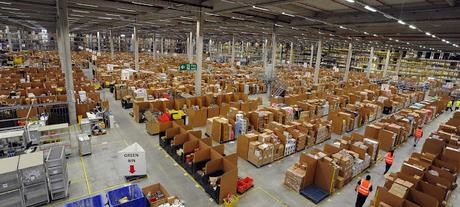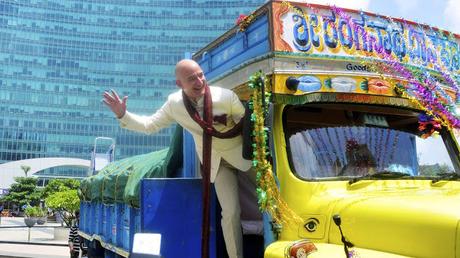Amazon River is the largest river in South America.The headwaters of the Apurímac River on Nevado Mismi had been considered for nearly a century as the Amazon’s most distant source, until a 2014 study found it to be the Cordillera Rumi Cruz at the headwaters of the Mantaro River in Peru. The Mantaro and Apurímac join, and with other tributaries form the Ucayali River, which in turn meets the Marañón River upstream of Iquitos, Peru, to form what countries other than Brazil consider to be the main stem of the Amazon. Indian Insurance industry has changed – for very many decades, it relied totally on either the vast Agency (individuals) distribution,its own Development Officers and in recent decade on Insurance brokers – now there is plethora of partners available, that include Banca, Motor dealer and many more distribution partners in business as also Internet marketing – the web arm. Never thought of this new one until someone sent me a link ofQZ article which read :If clothes and mobile phones weren’t enough, there’s a new battleground in India’s e-commerce war: insurance. And Amazon is its latest entrant. https://qz.com/india/1393303/amazon-paytm-flipkart-seek-to-disrupt-indian-insurance-industry/ Amazon.com, Inc., doing business as Amazon is an American electronic commerce and cloud computing company based in Seattle, Washington, that was founded by Jeff Bezos on July 5, 1994. The tech giant is the largest Internet retailer in the world as measured by revenue and market capitalization, and second largest after Alibaba Group in terms of total sales.Amazon has separate retail websites for very many countries though Amazon also offers international shipping of some of its products to certain other countries. In 2017, Amazon acquired Whole Foods Market for $13.4 billion, which vastly increased Amazon's presence as a brick-and-mortar retailer.
 Jeff Bezosselected the name Amazon by looking through
the dictionary; he settled on "Amazon" because it was a place that
was "exotic and different", just as he had envisioned for his
Internet enterprise. The Amazon River, he noted, was the biggest river in the
world, and he planned to make his store the biggest bookstore in the world. Additionally, a name that began with
"A" was preferential due to the probability it would occur at the top
of an alphabetized list.
Amazon globally is
in news for raising its minimum wage to
$15 per hour for all U.S.-based employees is a result, in part, of a booming
U.S. economy, according to CNBC's Jim Cramer."Welcome to the world of full employment," said Cramer, whose
charitable trust owns shares of the e-commerce giant. "If you want
employees, you're going to have to pay." The Bureau of Labor Statistics
reported last month that average hourly earnings rose 2.9 percent in August,
the highest wage growth since mid-2009. Nonfarm payrolls grew by 201,000,
topping estimates of 191,000. Some economists have said the U.S. economy has
reached or exceeded so-called full employment, defined as the point at which
all available workers have jobs. The next jobs report will be released Friday.
Amazon's wage
increase will benefit more than 250,000 Amazon employees and another 100,000
seasonal employees. Some employees who already make $15 per hour will also see
a pay increase. Competitors have announced similar increases.
Back home, the Seattle-based
giant’s India unit in filings with the ministry of corporate affairs, described
its intent to enter India’s rapidly growing insurance industry, Bloomberg Quint
reported (Sept. 17). The firm’s digital-payments arm, Amazon Pay, is slated to
roll out the specific products, along with other financial products like loans
and EMI services. The world’s largest e-commerce company has for years been
locked in a fierce competition with Bengaluru-based Flipkart, the biggest
Indian firm in the industry. Besides other categories that the two firms
compete in, Amazon has been investing heavily in fintech and financial products
for some time now. Just last month, it acquired Sequoia Capital-backed startup
Tapzo to help support Amazon Pay. A questionnaire that Quartz e-mailed to
Amazon is yet to receive a response.
Jeff Bezosselected the name Amazon by looking through
the dictionary; he settled on "Amazon" because it was a place that
was "exotic and different", just as he had envisioned for his
Internet enterprise. The Amazon River, he noted, was the biggest river in the
world, and he planned to make his store the biggest bookstore in the world. Additionally, a name that began with
"A" was preferential due to the probability it would occur at the top
of an alphabetized list.
Amazon globally is
in news for raising its minimum wage to
$15 per hour for all U.S.-based employees is a result, in part, of a booming
U.S. economy, according to CNBC's Jim Cramer."Welcome to the world of full employment," said Cramer, whose
charitable trust owns shares of the e-commerce giant. "If you want
employees, you're going to have to pay." The Bureau of Labor Statistics
reported last month that average hourly earnings rose 2.9 percent in August,
the highest wage growth since mid-2009. Nonfarm payrolls grew by 201,000,
topping estimates of 191,000. Some economists have said the U.S. economy has
reached or exceeded so-called full employment, defined as the point at which
all available workers have jobs. The next jobs report will be released Friday.
Amazon's wage
increase will benefit more than 250,000 Amazon employees and another 100,000
seasonal employees. Some employees who already make $15 per hour will also see
a pay increase. Competitors have announced similar increases.
Back home, the Seattle-based
giant’s India unit in filings with the ministry of corporate affairs, described
its intent to enter India’s rapidly growing insurance industry, Bloomberg Quint
reported (Sept. 17). The firm’s digital-payments arm, Amazon Pay, is slated to
roll out the specific products, along with other financial products like loans
and EMI services. The world’s largest e-commerce company has for years been
locked in a fierce competition with Bengaluru-based Flipkart, the biggest
Indian firm in the industry. Besides other categories that the two firms
compete in, Amazon has been investing heavily in fintech and financial products
for some time now. Just last month, it acquired Sequoia Capital-backed startup
Tapzo to help support Amazon Pay. A questionnaire that Quartz e-mailed to
Amazon is yet to receive a response.
 E-commerce firms
whose business model lies in forming a “customer connect” try to “sell
everything their customer needs,” including, now, insurance products, said
Kalpesh Mehta, partner at auditing firm Deloitte Haskins & Sells. Yet, this
could turn out to be a long-drawn battle considering the insurance industry’s
low level of penetration in the country.In February this year, payments major Paytm created two separate
insurance companies, including a life-insurance firm designed to compete even
with state-owned behemoth Life Insurance Corporation of India. The company,
already backed by Softbank and Alibaba, got a “game-changer” of an investment
from Warren Buffet just two weeks ago.
A year ago,
Flipkart, in which Walmart acquired a controlling stake this May, reportedly
declared its intent to enter the insurance market. The Bengaluru-based firm is
also betting hard on fintech.Now all
eyes are on the issue of regulation.
Flipkart reportedly
sought the Insurance Regulatory and Developmental Authority of India’s (IRDAI)
approval months ago, but there’s been no word since. Paytm, on the other hand,
received the nod last September, and has incorporated its two insurance
companies, Paytm Life Insurance Corporation and Paytm General Insurance
Corporation. Amazon, on its part, is yet to even apply, according to sources
cited in BloombergQuint’s report.
E-commerce firms
whose business model lies in forming a “customer connect” try to “sell
everything their customer needs,” including, now, insurance products, said
Kalpesh Mehta, partner at auditing firm Deloitte Haskins & Sells. Yet, this
could turn out to be a long-drawn battle considering the insurance industry’s
low level of penetration in the country.In February this year, payments major Paytm created two separate
insurance companies, including a life-insurance firm designed to compete even
with state-owned behemoth Life Insurance Corporation of India. The company,
already backed by Softbank and Alibaba, got a “game-changer” of an investment
from Warren Buffet just two weeks ago.
A year ago,
Flipkart, in which Walmart acquired a controlling stake this May, reportedly
declared its intent to enter the insurance market. The Bengaluru-based firm is
also betting hard on fintech.Now all
eyes are on the issue of regulation.
Flipkart reportedly
sought the Insurance Regulatory and Developmental Authority of India’s (IRDAI)
approval months ago, but there’s been no word since. Paytm, on the other hand,
received the nod last September, and has incorporated its two insurance
companies, Paytm Life Insurance Corporation and Paytm General Insurance
Corporation. Amazon, on its part, is yet to even apply, according to sources
cited in BloombergQuint’s report.
Among the new, tech-oriented entrants, payment-bank companies are likely to have an edge, Mehta of Deloitte Haskins & Sells said. “Payment banks actually connect with customers for financial needs,” he told Quartz. “When you’re doing your financial transactions—transferring funds, receiving funds, and also looking at all the options of how to use your money—that is the time when you would look at insurance, not when you are looking at buying products.” Meanhwile, Amazon’s somewhat delayed entry won’t cost it much since overall insurance coverage itself remains quite low in India. Between 2001 and 2017, it rose by just one percentage point, from 2.7% to 3.7%, according to a study by industry body Assocham. The insurance coverage is projected to grow far more quickly in the next few years, with the industry value estimated to rise from the current $72 billion (Rs5 lakh crore) to $280 billion by 2020. As the rivalry plays out, Indian insurance, dominated for decades now by public players and specialist firms, may soon be disrupted by new-age companies—perhaps even sparking the sector’s take-off after years of sclerotic growth. Interesting ! With regards – S. Sampathkumar 2nd Oct 2018.

